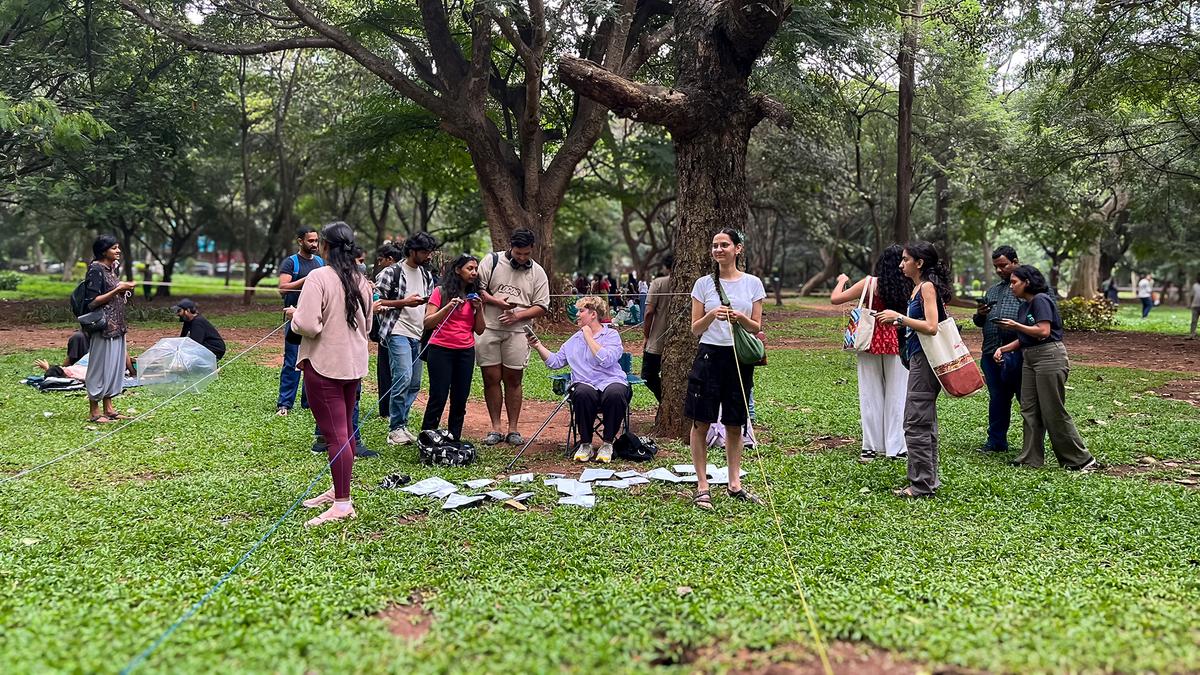
Bringing together the many networks of Bengaluru Premium
The Hindu
Unfurling the zine handed to us at the start of the walk, we use brightly-coloured markers to draw squiggly cables across the page, starting from a sepia-toned vintage photograph of the telegraph office. Iz, who goes by the pronouns they/them, explains, “This building is still standing, though it shut down in 2013,” they say, pointing out that telegraphy, which started in Bengaluru in 1854, was an instrument of colonial power and control. “The British colonised lands via telegraph cables, something known as the All Red Line.”
Cables tinsel the ruins of the Central Telegraph Office in Bengaluru, skimming past its worn walls and shuttered windows before losing themselves in the dense foliage of an adjoining ficus tree with heart-shaped leaves softly fluttering in a mild afternoon breeze.
“Follow any cable with your pen,” says multi-disciplinary Berlin-based designer and artist Iz Paehr, who is co-leading a network walk at Cubbon Park titled “Writing Telegrams to Fungi, Sending Bytes across Trees” along with Bengaluru-based artist and fungiculturist, Biplab Mahato.
Unfurling the zine handed to us at the start of the walk, we use brightly-coloured markers to draw squiggly cables across the page, starting from a sepia-toned vintage photograph of the telegraph office. Iz, who goes by the pronouns they/them, explains, “This building is still standing, though it shut down in 2013,” they say, pointing out that telegraphy, which started in Bengaluru in 1854, was an instrument of colonial power and control. “The British colonised lands via telegraph cables, something known as the All Red Line.”
More such titbits of information emerged over the two-hour-long walk that started at the telegraph office, went into Cubbon Park and ended at the Art in Transit studio at the Cubbon Park metro station.
On this walk, participants attempted to trace networks of all sorts, “from digital devices that connect (some of) us to global communication structures, to the fine threads of mycorrhizal networks—networks comprising fungi and plants in a symbiotic relationship—that interconnect the very trees that in turn hold internet cables,” as the event’s release states.
Whether it be how the internet is transmitted by fibre optic cables running through the world’s oceans, the importance of mycorrhizal networks for optimal ecosystem functioning or how the internet infrastructure continues to be skewed towards the global North, the layered, nuanced nature of these networks were constantly reinforced during the event, both by knowledge sharing and through a series of activities.”
“I think there are some connections between the world wide web and what is sometimes called the ‘wood wide web’, a metaphor used to describe how mycelium (the root-like part of a fungus with its branched, tubular filaments) helps nutrients to pass between trees,” says Iz, who is deeply concerned with questions of material, touch, access and infrastructure. “Because the metaphor is so present, it became a way of bridging these networks, not to equate them but of thinking of them next to each other and seeing how they differ.”





















 Run 3 Space | Play Space Running Game
Run 3 Space | Play Space Running Game Traffic Jam 3D | Online Racing Game
Traffic Jam 3D | Online Racing Game Duck Hunt | Play Old Classic Game
Duck Hunt | Play Old Classic Game











